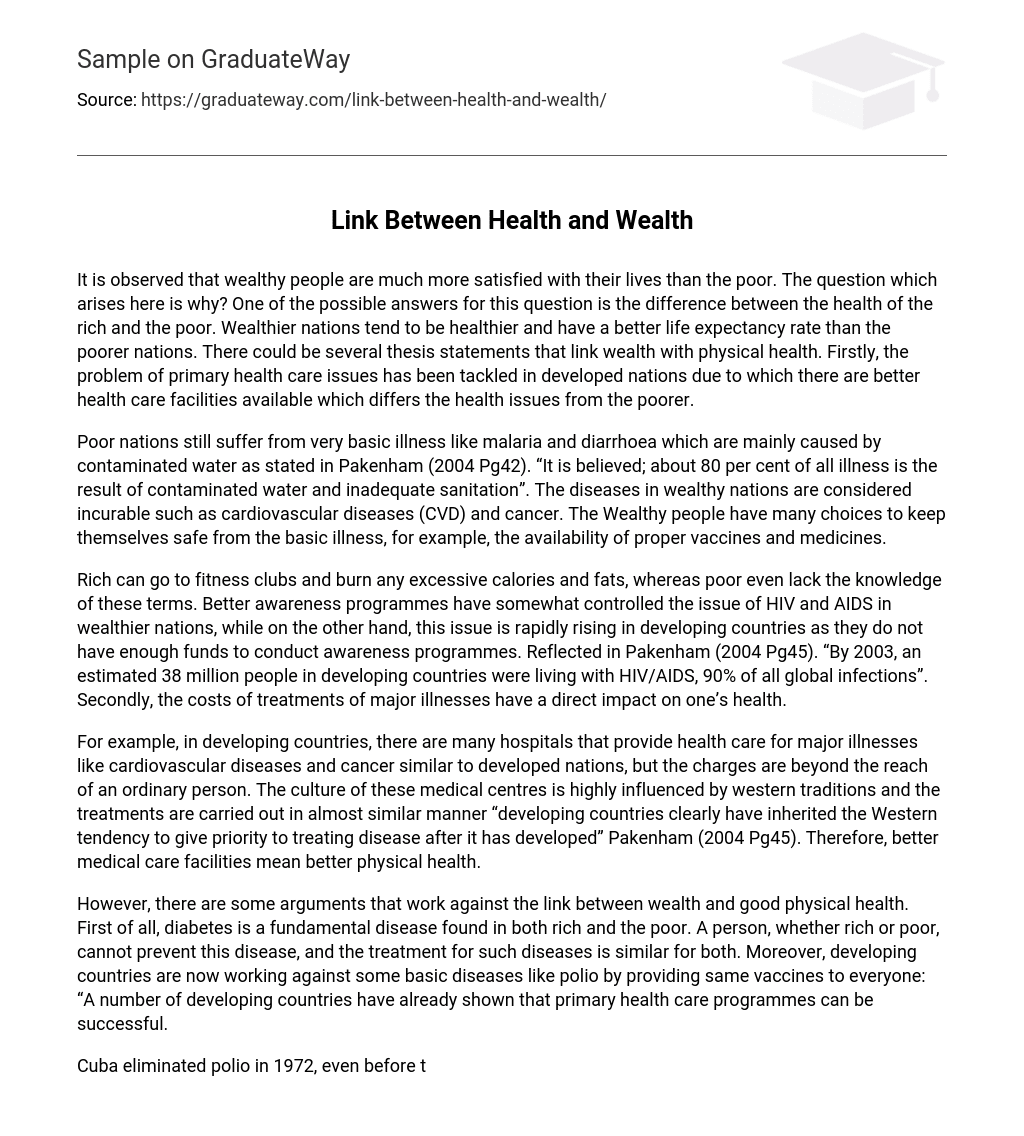Wealthy individuals are noticeably more content with their lives compared to those who are poor. The inquiry that arises is the reason behind this phenomenon. One possible explanation is the contrast between the health statuses of the affluent and impoverished. Wealthier nations generally experience better health and life expectancy rates in comparison to poorer nations. Numerous thesis statements can be established to connect wealth with physical well-being. Firstly, developed countries have successfully addressed primary health care problems, resulting in superior health care resources that distinguish them from less affluent regions.
In less developed countries, the presence of diseases like malaria and diarrhoea, caused by contaminated water, persists. Pakenham (2004 Pg42) asserts that approximately 80 percent of all illnesses are caused by contaminated water and inadequate sanitation. Conversely, wealthier nations face incurable diseases such as cardiovascular diseases (CVD) and cancer. The privileged individuals in affluent societies have access to a variety of options to protect themselves from basic illnesses, including proper vaccines and medications.
Rich individuals have the opportunity to attend fitness clubs and eliminate any excess calories and fats from their bodies, unlike the poor who lack knowledge about these concepts. In wealthier nations, improved awareness programs have somewhat controlled the prevalence of HIV and AIDS. However, in developing countries where funds are insufficient to conduct such programs, the issue of HIV and AIDS is rapidly escalating. Pakenham (2004 Pg45) states that in 2003, approximately 38 million people in developing countries were living with HIV/AIDS, accounting for 90% of all global infections. Additionally, the costs of treating major illnesses directly impact one’s overall health.
In developing countries, medical centers provide healthcare for major illnesses like cardiovascular diseases and cancer. However, these services are costly for the average person. These medical centers follow western traditions and adopt a similar approach to treatment. Pakenham (2004 Pg45) states that developing countries prioritize disease treatment after it has already developed, following the Western model. Therefore, improved medical facilities result in enhanced physical health.
Despite the belief that good physical health is tied to wealth, there are counterarguments. One such argument is that diabetes affects both rich and poor individuals regardless of their economic status. The treatment for this disease is similar for affluent and less privileged people alike. Furthermore, developing countries are striving to fight diseases like polio by providing equal access to vaccines for all. Several developing nations have already demonstrated the effectiveness of primary health care programs.
Pakenham (2004 Pg47) states that Cuba eradicated polio in 1972, preceding the United States. The notion that wealth and health are linked implies that affluent individuals generally enjoy better healthcare, resulting in longer and healthier lives. Conversely, impoverished individuals encounter difficulties in accessing even fundamental medical care.
The link between wealth and physical health is emphasized in the conclusion (Pakenham, 2004). Muhammad Furqan Khalid (FQ), a student in the Foundation Business Economics with Accounting course at INTO City University London, discusses this connection. The information was provided on November 30th, 2011 by Julian Ridler, the teacher of group FB2C.





